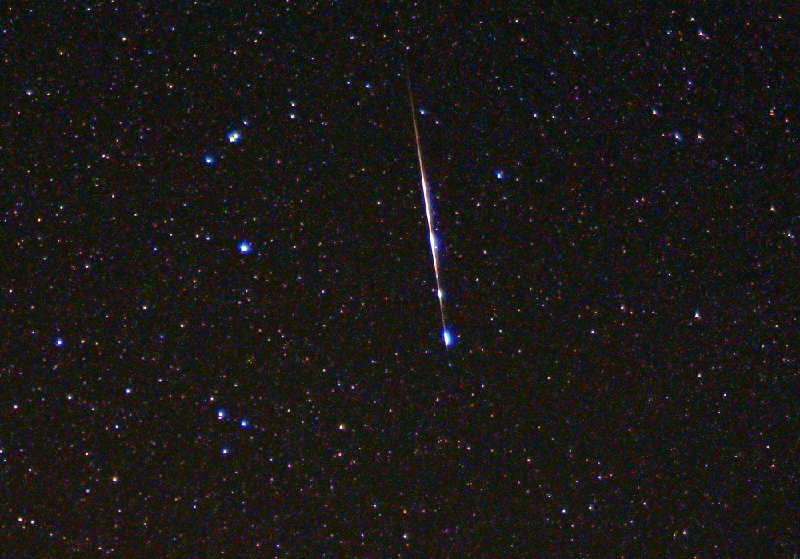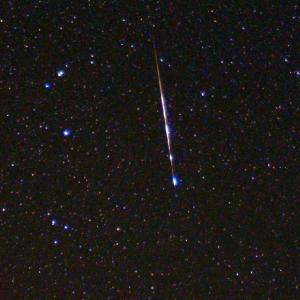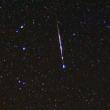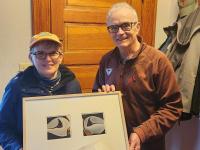A perfect night for shooting stars
The next few nights and early dawns will be the best time to get outside, lay back on the grass and watch one of the best meteor showers in the Northern Hemisphere, the Perseids, when meteors from the comet Swift-Tuttle will leave trains of light against the dark sky. Already tonight, conditions are nearly perfect, with the moon politely remaining understated. The skies are clear, a breeze is fending off the bugs, and there's little excuse not to turn off the electronics and watch the sky.
Peak activity for the Perseids is Aug. 10-13, when up to 60, maybe more, meteors per hour might be spotted, according to astronomers. The velocity of the meteors streak across the sky at 37 miles per second, according to NASA's Jet Propulsion Laboratory in Pasadena, California.
What are these shooting stars? Little bits of space debris entering earth's atmosphere at high velocity. The meteor shower are small particles that have broken off from a comet that has gone close to the sun, which "cooks off" parts of the comet's frozen surface, like dust.
"Each swing through the inner solar system by a comet can leave trillions of small particles in its wake,” according to NASA. "If Earth's orbit intersects with this trail of debris, the result is a meteor shower."
A highly visible meteor shower occurs as earth gets closer to the densest portion of a comet's stream.
According to Earth-Sky: "The Perseids tend to strengthen in number as late night deepens into midnight, and typically produce the most meteors in the wee hours before dawn. They radiate from a point in the constellation Perseus the Hero, but, as with all meteor shower radiant points, you don't need to know Perseus to watch the shower; instead, the meteors appear in all parts of the sky. They are typically fast and bright meteors. They frequently leave persistent trains. Every year, you can look for the Perseids around Aug. 10-13. They combine with the Delta Aquarid shower (above) to produce the year's most dazzling display of shooting stars. In 2013, the Perseid meteors will streak across the short summer nights – August 10-13 – from late night until dawn, with little to no interference from the waxing crescent moon. Plus the moon will be near the planet Saturn in the evening hours, giving a colorful prelude to late-night Perseid show. Best mornings to look: August 11, 12 and 13."
http://earthsky.org/astronomy-essentials/earthskys-meteor-shower-guide
Event Date
Address
United States

























